
St Martin in the Bull Ring is a Church of England parish church in the city of Birmingham, West Midlands, England. It is the original parish church of Birmingham and stands between the Bull Ring Shopping Centre and the markets.

St. John the Baptist Church is an Anglican church in Beeston, Nottinghamshire, England.
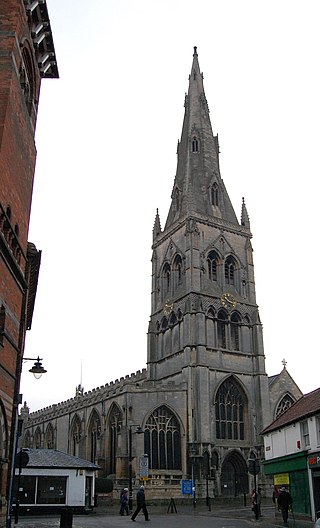
St Mary Magdalene Church, Newark-on-Trent is the parish church of Newark-on-Trent in Nottinghamshire, England. It is dedicated to Mary Magdalene and is the tallest structure in the town.
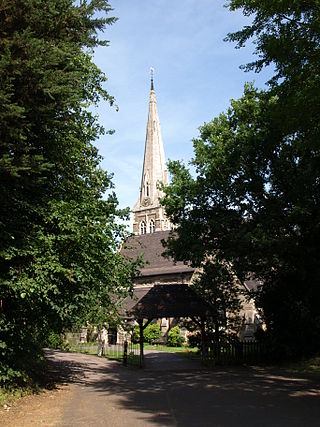
St. Mary's Church, Selly Oak is a Church of England parish church in Selly Oak, Birmingham, England.
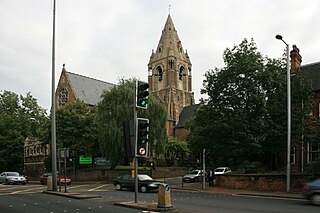
St. Andrew's Church, Nottingham in Nottinghamshire, England is a parish church in the Church of England.

St Stephen's Church, Sneinton is a parish church in the Church of England. It is the parish church of the Sneinton suburb of Nottingham, Nottinghamshire, England.

Holy Trinity Church, Lenton is a parish church in the Church of England Diocese of Southwell, located in Lenton, Nottingham.

St. John the Evanglist, Carrington is a parish church in the Church of England in Carrington, Nottingham.

St. Giles' Church, West Bridgford is an Anglican parish church in West Bridgford, Nottinghamshire.

St Peter's Church, Radford is an Anglican parish church in Radford, Nottingham, located at 171 Hartley Road. It is a Grade II listed building as being of special architectural or historic interest.

Charles Lloyd was a pipe organ builder based in Nottingham who flourished between 1859 and 1908.
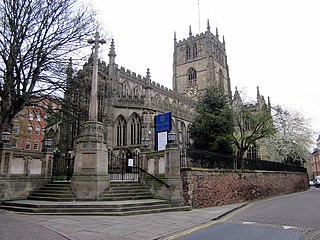
The Church of St Mary the Virgin is the oldest parish church of Nottingham, in Nottinghamshire, England. The church is Grade I listed by the Department for Digital, Culture, Media and Sport as a building of outstanding architectural or historic interest. It is one of only five Grade I listed buildings in the City of Nottingham.
St. Paul's Church, George Street, was a Church of England church built as a chapel of ease to St. Mary's Church, Nottingham. It was opened in 1822 and closed in 1924.
St. James' Church, Standard Hill was a Church of England church in Nottingham.
St Mark's Church, Nottingham, was a Church of England church in Nottingham, Nottinghamshire, England between 1856 and 1958. The section of Huntingdon Street where the church was located was formerly called Windsor Street.
Emmanuel Church, Nottingham was a Church of England church in Nottingham on Woodborough Road between 1883 and 1972.
St. Philip's Church, Nottingham, was a Church of England church in Nottingham on Pennyfoot Street between 1879 and 1963.

St Stephen's Church, Hyson Green is a Church of England church in Hyson Green, Nottingham.
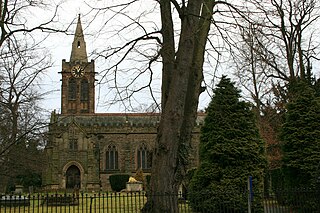
St. Peter's Church is a Church of England church in Ruddington, Nottinghamshire.

St Swithun's Church is a Grade II* listed Church of England parish in the Diocese of Southwell and Nottingham in East Retford, Nottinghamshire, England.
















